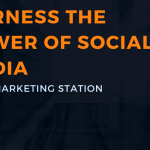
How to build a targeted Google Ads Account
Posted by admin
1. How to build a targeted Google Ads Account
If you are new to Google Ads or have been running a Google Ads account for some time, you will understand when we say, your ‘free’ Google Ads $100 credit that actually cost you a few hundred was just the start to what is now a very large monthly Google bill. You would have thought this would be a great way to get instant business. You soon realise this is not the case as every click is precious, which is why building a targeted campaign is crucial. Google does work when executed well. Don’t fall into the trap of taking all of Google’s recommendations as gospel, some in fact can impact a negative outcome. There is a light at the end of the tunnel, you can start generating targeted clicks /leads with some very simple steps.
Step one – put pen to paper – write down your core business services or your core business products, not too many as you want to start small to start building out your campaign later. You also need to write down locations you service.
Let’s use our business as an example of how this will look. Our core services are Web Design, SEO, Google Ads management, Social media management to name a few. We service Australia wide. So now we have our core business services, we will use these as our ADGROUP names.
Step two- write down only relevant keywords for each of your newly developed ADGROUPS.
Again using our company as an example, our ADGROUP Web design keywords will be as follows; web design services, web design for small business, web design to increase ROI.
Step Three – add these newly developed keywords into your corresponding adgroup.
When adding your keywords do not use the match type ‘broad match’ unless you will be making the keyword a broad match modifier (which will look like this – +web +design +services). To ensure your clicks remain relevant, you need to select ‘phrase’ .
Broad match keywords can burn through budget and generate irrelevant clicks – an example of this would be a recent client we helped to tidy up their Google ads account – the business specialised in home extensions, and upon investigating, they had over 50 clicks within a 4 week period for ‘Hair Extensions’, this is because the keyword home extension was a broad match.
Step 4 – time to get creative with ad copy. Each of your adgroups with their dedicated keywords needs an ad – this is what the user will see when performing a Google search. A few things to keep in mind – the content within your ad copy must also be present on the web page where your ad will go, this tells Google you have a relevant ad which is what the user has searched for and this also gives you a good quality score which helps with price in the ad auction. Next, choose where your ad will go – what URL on your website is relevant to that adgroup- Using our business as an example, we will take the users to marketingstation.com.au/webdesign
STEP 5 – time to set up some sitelinks, call extensions, structured snippets, and all the available features to enhance your ads look and user experience.
Step 6 – In your campaign settings -set up your daily budget,again, keep it modest for now as you will be making many changes within the first few weeks of your new google ads structure to further refine your campaign and improve the quality of clicks, once the quality is there, it’s time to start tracking your real conversions/leads. Set up your locations – where your ad will be displayed, if you are local and are looking for local traffic, you can select radius targeting to reach a certain amount of Kilometers around your location.
2. How to link your google analytics goals to your google ads account
Setting up Google Analytics goals is a great way to track actions on your website and this is crucial to determine how and where leads are coming from – it is also crucial to identify if any pages on your website are letting you down.
Linking your analytics goals onto your Google ADs account will give you more insight to what keyword triggers are the catalyst for a user action – an example of this, a user fills in your contact form or buys a product. You can see what keyword phrase was used in this action to convert t a lead.
STEP 1 – Click on the Tools and Setting icon on the top menu of your google ads account (the spanner) then select the linked accounts option
STEP 2 – Select the Google Analytics option and go to details
STEP 3 – select the google analytics account from the Analytics property list by selecting ‘LINK’ (under actions) and click SAVE
STEP 4 – Go back to Tools and Setting icon on the main Google Ads menu and select Conversions (under the column Measurement)
STEP 5 -Select the + icon to add a new conversion
STEP 6 -Select the IMPORT box and select Google analytics, then continue
STEP 7 – Select which goals you would like to import and select Import and Continue
STEP 8 – Click Done
and thats it! You will start seeing your goal data on your Google ads conversion data.
3. What is content marketing and how can this help my business
Content marketing is the key to building a long term strategy for your brand, products and services by creating engagement ,interesting and informative content that creates users to follow, share and engage with you online. Building strong relationships with your audience without pushing your ‘SALE’ and focusing on interesting industry topics, how to guides and more. This can take the form of your latest news, social media content, PDFs, email newsletters, infographic, tweets and more.
The importance of real content has surpassed the paid advertising tactics where the ‘SALE’ is the primary focus. Content Marketing takes the sale out of the equation. Small business owners need to realise that more than 70% of there potential customers are more interested in learning about a product or service than simply reacting to an advertisement.
Content marketing










